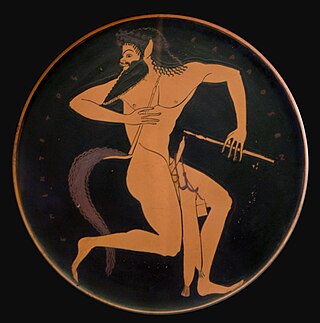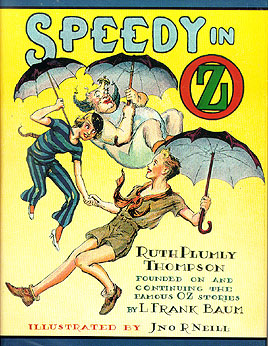
A nymph, sometimes spelled nymphe, in ancient Greek folklore is a minor female nature deity. Different from Greek goddesses, nymphs are generally regarded as personifications of nature, are typically tied to a specific place or landform, and are usually depicted as maidens. They were not necessarily immortal, but lived much longer than human beings.

In Greek mythology, a satyr, also known as a silenus or silenos, is a male nature spirit with ears and a tail resembling those of a horse, as well as a permanent, exaggerated erection. Early artistic representations sometimes include horse-like legs, but, by the sixth century BC, they were more often represented with human legs. Comically hideous, they have mane-like hair, bestial faces, and snub noses and are always shown naked. Satyrs were characterized by their ribaldry and were known as lovers of wine, music, dancing, and women. They were companions of the god Dionysus and were believed to inhabit remote locales, such as woodlands, mountains, and pastures. They often attempted to seduce or rape nymphs and mortal women alike, usually with little success. They are sometimes shown masturbating or engaging in bestiality.
Ocyrhoe or Ocyrrhoe (Ὠκυρρόη) refers to at least five characters in Greek mythology.
The name Egeria may refer to:
In Greek mythology, a nymph or nymphe is a female nature-spirit.
In Greek mythology, Helice was a name shared by several women:

Speedy in Oz (1934) is the twenty-eighth in the series of Oz books created by L. Frank Baum and his successors, and the fourteenth written by Ruth Plumly Thompson. It was Illustrated by John R. Neill.
Stilbe in Greek mythology may refer to the following personages:
The Constant Nymph may refer to:
In Greek mythology, the name Arge may refer to:
In Greek mythology, the name Oenoe or Oinoe may refer to:
The Nymphai Hyperboreioi were nymphs in Greek mythology who presided over aspects of archery.
Dione is the name of four women in ancient Greek mythology, and one in the Phoenician religion described by Sanchuniathon. Dione is translated as "Goddess", and given the same etymological derivation as the names Zeus, Diana, et al. Very little information exists about these nymphs or goddesses, although at least one is described as beautiful and is sometimes associated with water or the sea. Perhaps this same one was worshiped as a mother goddess who presided over the oracle at Dodona, Greece and was called the mother of Aphrodite.

Larotrectinib, sold under the brand name Vitrakvi, is a medication for the treatment of cancer. It is an inhibitor of tropomyosin kinase receptors TrkA, TrkB, and TrkC. It was discovered by Array BioPharma and licensed to Loxo Oncology in 2013.

Pogo Structures is a French boat builder founded in Quimper by Christian Bouroullec in 1987. The company moved in 1990 to Combrit, specializes in the design and manufacture of racing and cruising sailboats. It launched its first motor boat in 2017.
In Greek mythology, Opis or Upis (Οὖπις) may refer to the following characters:
This page is based on this
Wikipedia article Text is available under the
CC BY-SA 4.0 license; additional terms may apply.
Images, videos and audio are available under their respective licenses.




